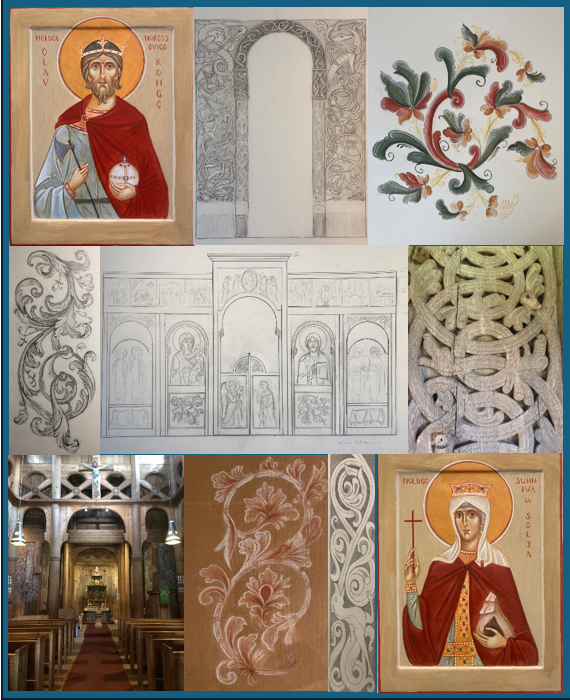Sacred Space
I am in the process of creating a sacred space for the Annunciation of the Holy Virgin Mary Orthodox Parish in Bergen, Norway, that expresses the beauty of worship in the Orthodox tradition, while reflecting the cultural context in which we find ourselves. Read on to learn more:
When encountering God in Orthodox worship, all the senses are involved. We see the Savior and salvation history painted before our eyes in the icons of Christ and the Mother of God, as well as in "the cloud of witnesses" that have gone before us. We smell the incense rising as prayer before God, as the Psalmist describes. We light candles, kiss the icons, and bow in reverence before God. We hear the words of Scripture recited again and again. We taste union with Christ in the bread and wine. It was precisely the beauty of God's house that the envoys, who in the 9th century were sent to Hagia Sophia, could not forget. This beauty led to the conversion of the Slavic people. The worship in the church was so beautiful that they reported back, saying they did not know whether they were in heaven or on earth.
Although we are far from grand cathedrals, the aim is to create a beautiful sacred space that expresses the beauty of worship in the Orthodox tradition. Also, I want the beautification of the church to reflect the cultural context in which we find ourselves, by drawing inspiration and incorporating elements from the stave churches, a unique feature of Norwegian church architecture, as well as from traditional forms of art like wood carving, textile work and decorative painting known as 'rosemaling'.
The visual expression of culture is a way to bring to God what is beautiful around us and offer it to Him. Just like we prepare wheat and grapes, the fruit of our human labour, into bread and wine and offer it back to Christ in the Eucharist, and it is then transformed for the sake of the world, so we can offer ourselves, our time and efforts and what is beautiful in our culture back to Him. This is an expression of the mystery of the incarnation. God became flesh and dwelt among us in a specific place and at a specific time, yet He is also incarnated in every person and in every place and in every time that Christ is born in our hearts. To draw on familiar and recognisable elements form the local context can underscore that even more. It is here that God has come near. Today, as the hymns say, today Christ is born. Right here and now in this place.
Many have described converting to the Orthodox Church as an experience of finally 'coming home'. I believe the visual expression of the sacred space can underscore this truth. When it appears as something beautiful and recognizable, it can help open our hearts to God.
The beautification of the sacred space will be part of my doctoral work as a current PhD student in Traditional Art at the King's Foundation School of Traditional Arts in London. I am interested in the relationship between universal and regional elements in iconography, and in how cultural particularity, along with the universality and timelessness of the Orthodox Church, can be communicated simultaneously. The design of the sacred space according to Orthodox tradition, in dialogue with Norwegian traditional art and architecture, forms part of my project.

We have just started a fundraiser for the project. Please go to annunciation.no for more information!
Se også helligebebudelsen.com for norsk versjon.